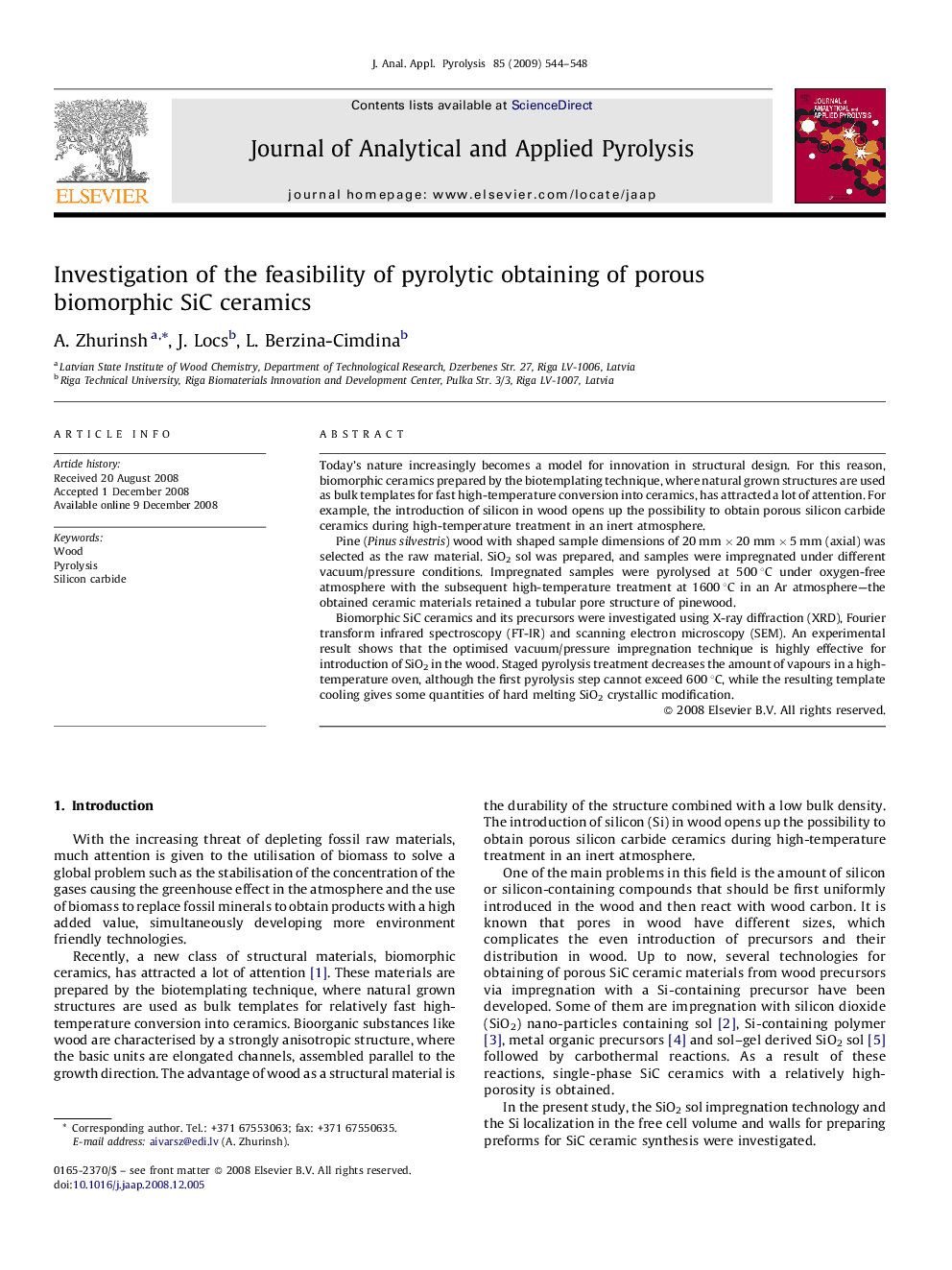| کد مقاله | کد نشریه | سال انتشار | مقاله انگلیسی | نسخه تمام متن |
|---|---|---|---|---|
| 1197562 | 1492986 | 2009 | 5 صفحه PDF | دانلود رایگان |

Today's nature increasingly becomes a model for innovation in structural design. For this reason, biomorphic ceramics prepared by the biotemplating technique, where natural grown structures are used as bulk templates for fast high-temperature conversion into ceramics, has attracted a lot of attention. For example, the introduction of silicon in wood opens up the possibility to obtain porous silicon carbide ceramics during high-temperature treatment in an inert atmosphere.Pine (Pinus silvestris) wood with shaped sample dimensions of 20 mm × 20 mm × 5 mm (axial) was selected as the raw material. SiO2 sol was prepared, and samples were impregnated under different vacuum/pressure conditions. Impregnated samples were pyrolysed at 500 °C under oxygen-free atmosphere with the subsequent high-temperature treatment at 1600 °C in an Ar atmosphere—the obtained ceramic materials retained a tubular pore structure of pinewood.Biomorphic SiC ceramics and its precursors were investigated using X-ray diffraction (XRD), Fourier transform infrared spectroscopy (FT-IR) and scanning electron microscopy (SEM). An experimental result shows that the optimised vacuum/pressure impregnation technique is highly effective for introduction of SiO2 in the wood. Staged pyrolysis treatment decreases the amount of vapours in a high-temperature oven, although the first pyrolysis step cannot exceed 600 °C, while the resulting template cooling gives some quantities of hard melting SiO2 crystallic modification.
Journal: Journal of Analytical and Applied Pyrolysis - Volume 85, Issues 1–2, May 2009, Pages 544–548